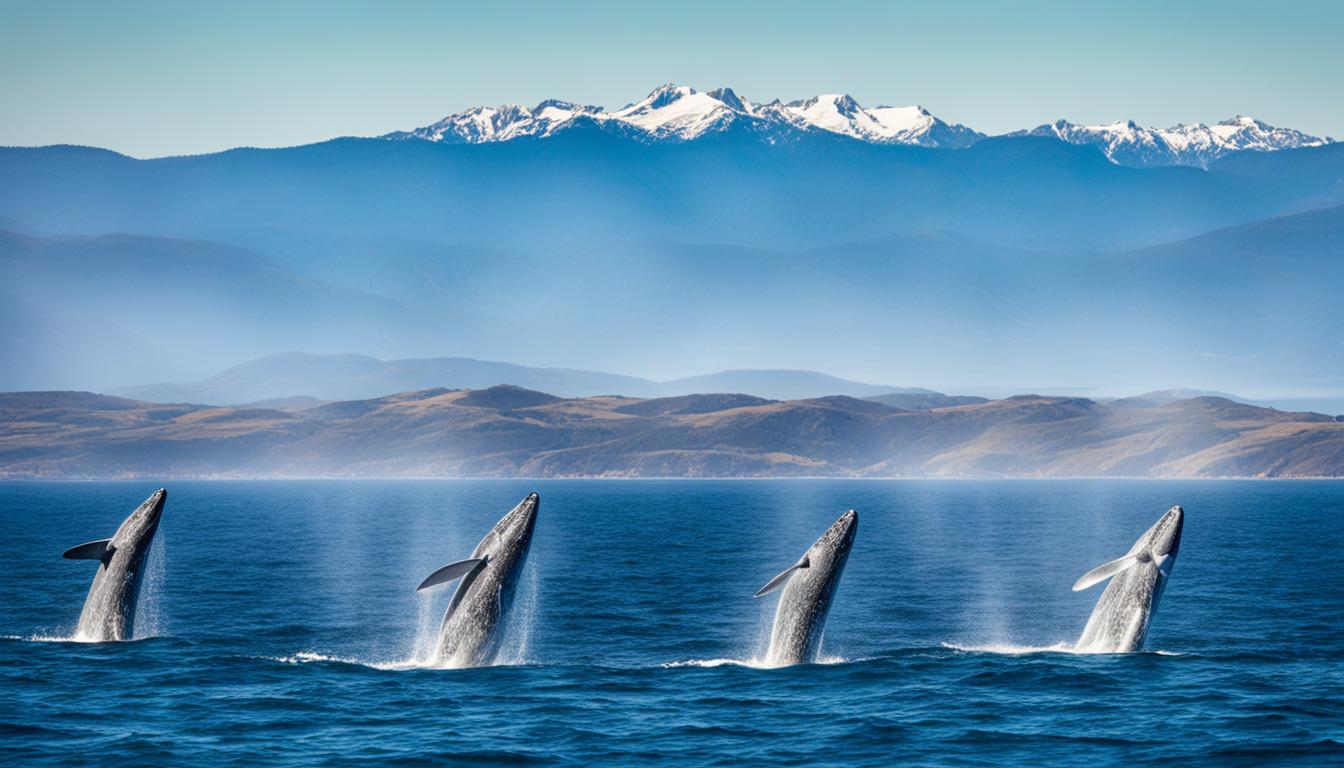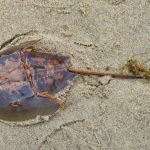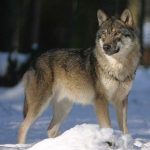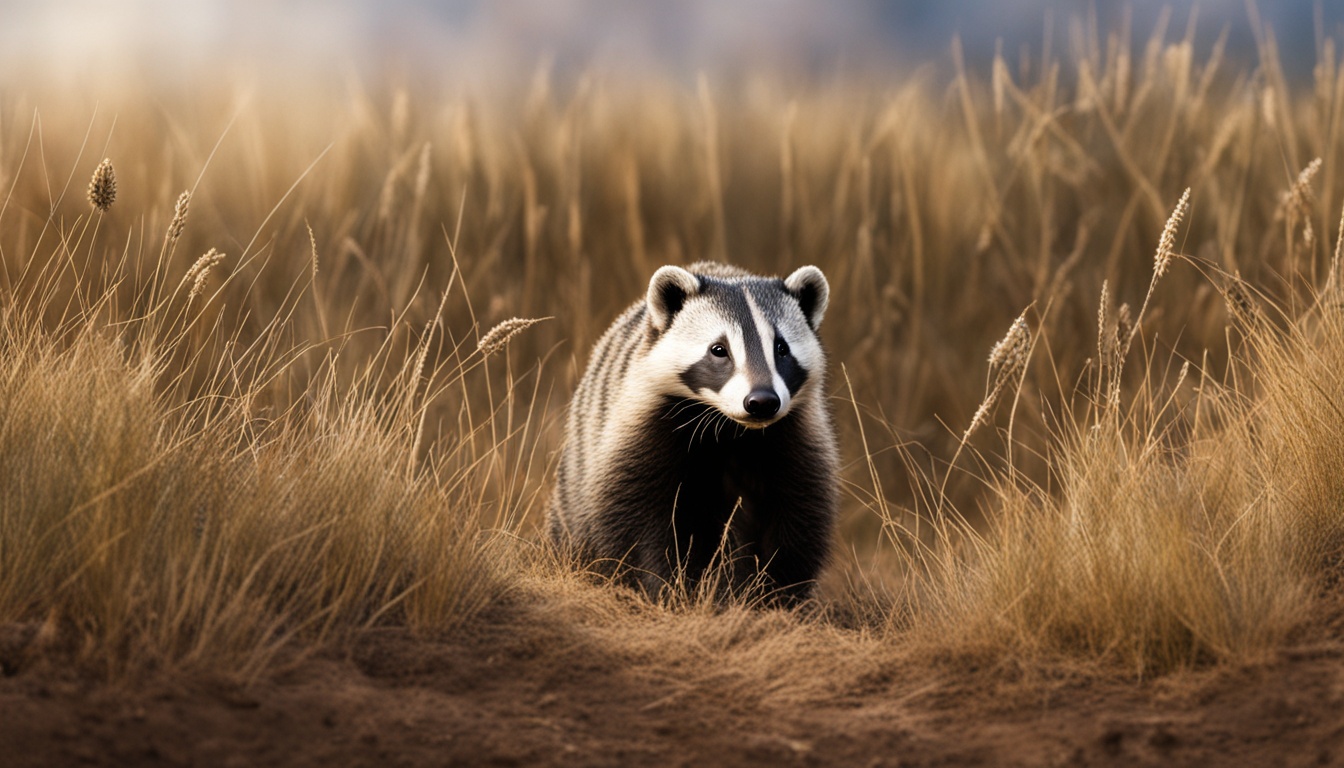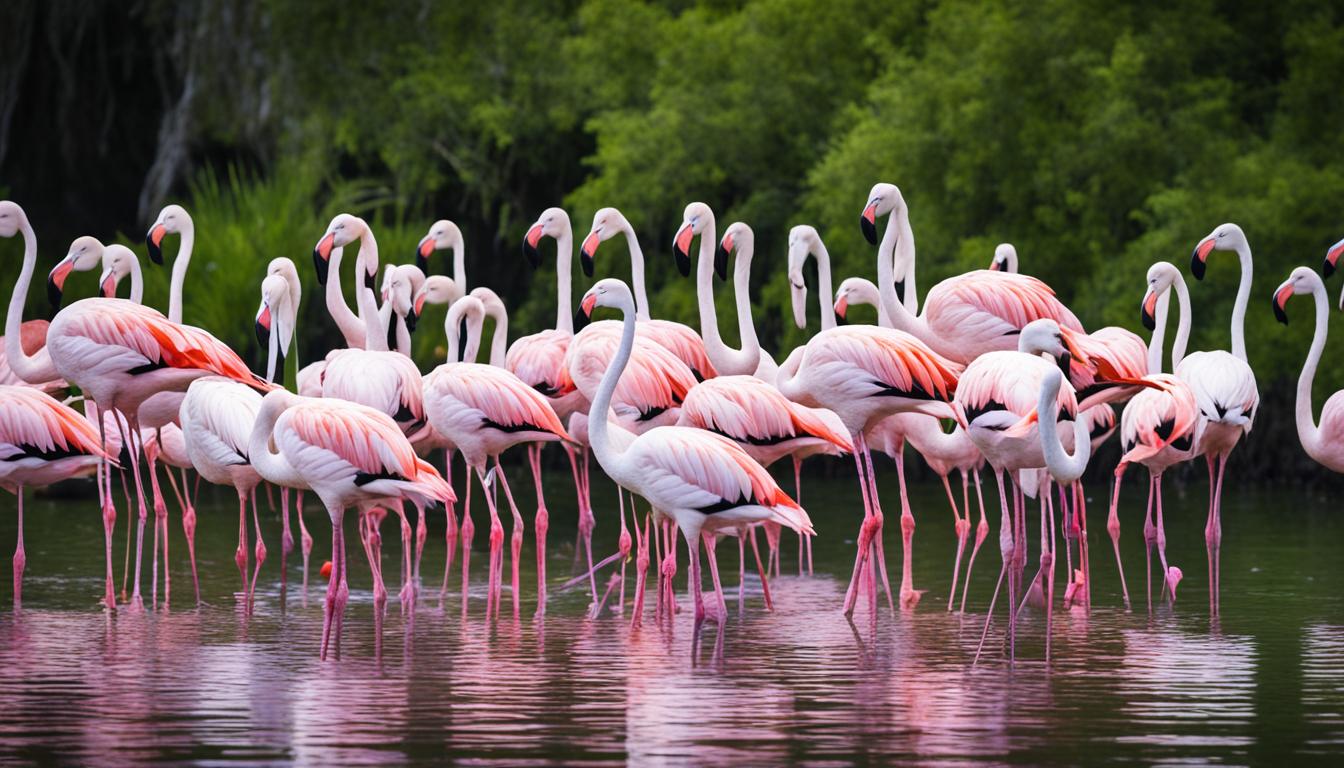Gray whales take one of the longest mammal journeys. They travel about 12,000 miles every year. They go from the cold Arctic to the warm waters of Baja California, Mexico. Then, they head back.
These huge creatures can grow up to 50 feet. They are known for their gray and white bodies. Their journey is a wonder to see.
Many years ago, these whales faced danger from whaling. But now, they number around 26,000 in the eastern Pacific. This shows that protecting them has made a big difference.
If you’re near the coast of California, watch out for them. They are called “gentle giants” because of their calm and friendly ways. They often come close to boats. This special chance to see them is unforgettable.
The Annual Migration of Gray Whales
Gray whales move a lot, showing us their amazing journey. They travel around 12,000 miles every year. This takes them from the cold Arctic to warm Baja California for breeding and back again. Their migration lasts for months and it’s a test of their strength.
Gray Whale Movements
Gray whales travel so far to find food and safe places to have babies. They carefully pick the best times to do this. It’s like they have a map in their heads, guiding them by the coasts and even sensing the ocean’s changing temperatures.
Epic Journey: 12,000 Miles Roundtrip
Gray whales make an epic journey, topping 75 miles a day at times. Their average speed is 5 miles an hour. Going south for breeding starts late November. Then, they head north back to the Arctic between May and October. They show off by leaping and playing along the way, giving us a show.
Gray Whale Migration Timeline
Knowing when gray whales move helps us see them better. They start down to Baja California in late November, reaching the lagoons by December. Coming back up to the Arctic starts in May, and it’s a great time to see them until May. We see them best in December and January going south, and in March and April heading back up, following their special life cycles.
These gray whale migration facts show how strong and smart these whales are. Watching their trip each year teaches us a lot about them and the ocean they live in.
Gray Whale Feeding Grounds in the Arctic
Gray whales head to the Arctic feeding grounds in summer for a feast. They arrive in May and stay until September. During this time, they enjoy meals of tiny creatures that live in the sediment.
The gray whale feeding grounds are key for these whales to get enough food. Their special way of feeding shows how well they’ve adapted. They leave marks on their heads from sifting through the ocean floor.
The Arctic feeding grounds play a huge role in the gray whales’ lives. These places give them the energy they need for their long travels. Knowing this helps us protect their homes, keeping the whales safe.
“Gray whales are significant indicators of the health of their Arctic feeding grounds. Ensuring their protection is vital for marine ecology.” – Marine Biologist
Let’s dive into how gray whales feed in the Arctic feeding grounds:
| Feeding Season | Main Diet | Distinctive Traits |
|---|---|---|
| May – September | Amphipods | Barnacle and scratch patterns on heads |
Southward Migration Heading to Baja California
Every year in September and October, gray whales head south towards Baja California. This journey is key to their life, and they travel very far. The process is both timely and fascinating for anyone who gets the chance to watch.
Timing and Route
While heading south, gray whales swim near the coast, covering about 75 miles daily. They maintain a speed of 5 miles per hour, reaching Baja California’s lagoons by December. Important environmental signals help them time their migration to ensure a good place for calving and mating.
Journey Characteristics
Gray whales’ trip shows how they adapt and endure through long, risky journeys. By traveling steadily and recognizing landmarks, they avoid dangers. Their migration highlights their endurance and adaptations, taking them safely to Baja California’s warm, crucial breeding locations. This journey is proof of their remarkable abilities.
What Are the Migration Patterns of Gray Whales?
Gray whales make an incredible journey every year, traveling thousands of miles. They go from the Arctic to Baja California for mating and calving. This round trip, known as the gray whale migration, happens between September and April, with the whales heading south in the fall and back north in the spring.
Climate and biological needs push the gray whales to migrate. They leave the Arctic as it gets icy, following a path near the North American coast. This journey lets them arrive in Baja California just in time for the best conditions for calving and mating.
On their way back in the spring, mother whales and their calves take a careful route. They stick to the coast to keep the calves safe from predators. This approach helps protect the young and is vital for the gray whale’s survival.
Arrival at the Lagoons of Baja California
In December, gray whales arrive at places like Guerrero Negro and Laguna San Ignacio in Baja California. This is when they start breeding and having their babies. The lagoons are perfect for this since they help the whales survive and grow as a species.
Breeding and Calving
At these lagoons, the gray whale breeding season sees adult whales mating in complex ways. This activity is a sight to see, showing the fascinating social life of gray whales. The calves, born in these warm waters, already reach 15 feet in length. This quick growth helps them get ready for the journey to the Arctic.
Behavior in the Lagoons
While in the lagoons, gray whales act in interesting ways. Adult whales are sometimes very friendly to people, allowing tourists to touch them. This friendly behavior and the fast growth of the calves make Baja California’s lagoons a top spot for interacting with these amazing creatures.
Northward Migration to Feeding Grounds
In late February, gray whales start their incredible northward migration to the Arctic. Mother-calf pairs stick near the coast. This helps protect the young from any predators. The calves, who are ready for this long journey, show great strength.
This journey lasts until May. It shows how strong and well-prepared these young whales are. They have spent months growing and getting ready for the trip ahead.
| Migration Start | Migration End | Speed | Mother-Calf Interaction |
|---|---|---|---|
| February | May | Approx. 5 mph | Protective & Close |
The gray whales’ northward migration is more than just a trip home. It’s a sign of their smart ways to survive and the strong bond between mothers and their calves. This amazing journey shows their resilience and the incredible drive of these sea animals. It’s a special event that happens every year.
Identifying Gray Whales During Migration
Spotting gray whales during their long trips is both exciting and educational. They have some special traits that help us know them in nature.
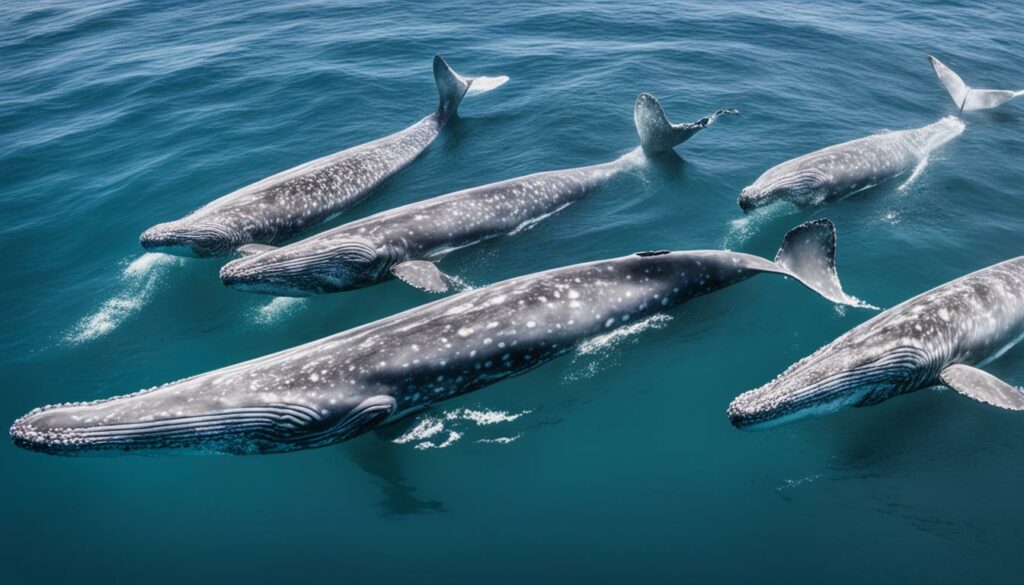
Characteristics and Indicators
Gray whales stand out with their gray and white pigmentation mixed with parasites and barnacles. They are unique because they don’t have a big fin on their backs. Instead, they have a line of small humps.
To find gray whales, watch for their heart-shaped blows when they breathe. You can also see their circular tails and sometimes watch them jump. These actions give us a chance to learn and protect these amazing animals.
Viewing Gray Whales Along the California Coast
Seeing gray whales on the California coast is an amazing experience. The coast’s high areas are perfect for watching these sea giants. Places like Point Reyes Lighthouse and Fort Funston offer great views.
In California, keep an eye out for gray whales. Watch for their unique tails, water spouts, and jumps. These actions are exciting to see and help us protect these whales.
You might spot them during their migration, especially from December to April. Watching these whales educates people and supports conservation. It ensures they remain for future watchers.

